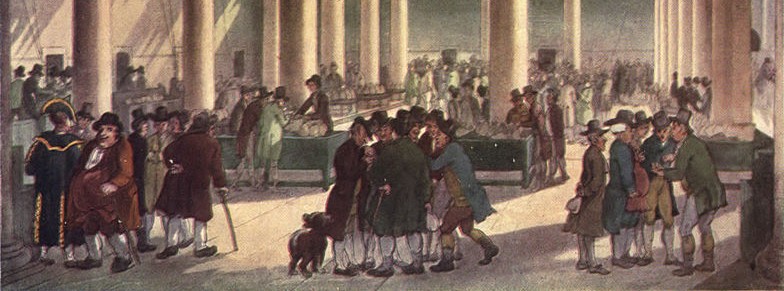“The term “Keynesian economics” was used to refer to the concept that optimal economic performance could be achieved – and economic slumps prevented – by influencing aggregate demand through activist stabilization and economic intervention policies by the government.”
In short, Keynesian economics call for state intervention of the market. Keynesian school of thought is also based on aggregate demand and not labor. (Investopedia, 2014).
Prior to Keynesian economics, classical economic thinking held that cyclical swings in employment and economic output would be modest and self-adjusting. According to this classical theory, if aggregate demand in the economy fell, the resulting weakness in production and jobs would precipitate a decline in prices and wages. A lower level of inflation and wages would induce employers to make capital investments and employ more people, stimulating employment and restoring economic growth. (Investopedia, 2014).
Keynesian economics refutes the notion held by some economists that lower wages can restore full employment, by arguing that employers will not add employees to produce goods that cannot be sold because demand is weak. Similarly, poor business conditions may cause companies to reduce capital investment, rather than take advantage of lower prices to invest in new plant and equipment; this would also have the effect of reducing overall expenditures and employment (Investopedia, 2014).
Theories
Keynesian economics is a theory of total spending in the economy (called aggregate demand) and its effects on output and inflation. Although the term “Keynesian” has been used to describe many theories, six principal theories are central to Keynesianism.
The first three describe how the economy works.
1. A Keynesian believes that aggregate demand is influenced by a host of economic decisions—both public and private—and sometimes behaves erratically (Blinder, 2008).
2. According to Keynesian theory, changes in aggregate demand, whether anticipated or unanticipated, have their greatest short-run effect on real output and employment, not on prices. Keynesians believe that what is true about the short run cannot necessarily be inferred from what must happen in the long run, and we live in the short run. They often quote Keynes’s famous statement, “In the long run, we are all dead,” to make the point.But Keynesians believe that, because prices are somewhat rigid, fluctuations in any component of spending—consumption, investment, or government expenditures—cause output to fluctuate. If government spending increases, for example, and all other components of spending remain constant, then output will increase (Blinder, 2008).
3. Keynesians believe that prices, and especially wages, respond slowly to changes in supply and demand, resulting in periodic shortages and surpluses, especially of labor (Blinder, 2008).
What distinguishes Keynesians from other economists is their belief in the next three theories about economic policy.
4. Keynesians do not think that the typical level of unemployment is ideal—partly because unemployment is subject to the caprice of aggregate demand, and partly because they believe that prices adjust only gradually. In fact, Keynesians typically see unemployment as both too high on average and too variable, although they know that rigorous theoretical justification for these positions is hard to come by. Keynesians also feel certain that periods of recession or depression are economic maladies, not, as in real business cycle theory, efficient market responses to unattractive opportunities (Blinder, 2008).
5. Many, but not all, Keynesians advocate activist stabilization policy to reduce the amplitude of the business cycle, which they rank among the most important of all economic problems. This does not mean that Keynesians think that fine-tuning is necessary—adjusting government spending, taxes, and the money supply every few months to keep the economy at full employment. But almost all economists, including most Keynesians, believe that the government simply cannot know enough soon enough to fine-tune successfully. Three different lags make it unlikely that fine-tuning works. First, there is a lag between the time that a change in policy is required and the time that the government recognizes this. Second, there is a lag between when the government recognizes that a change in policy is required and when it takes action. Third, there is a lag that comes between the time that policy is changed and when the changes affect the economy. This lag could be many months, yet many Keynesians still believe that more modest goals for stabilization policy—like a little less fine-tuned—are sensible. “For example, an economist need not have detailed quantitative knowledge of lags to prescribe a dose of expansionary monetary policy when the unemployment rate is very high (Blinder, 2008).”
6. Finally, some Keynesians are more concerned about combating unemployment than about conquering inflation. They have concluded from the evidence that the costs of low inflation are small. However, there are plenty of anti-inflation Keynesians. Most of the world’s current and past central bankers, for example, merit this title whether they like it or not. Views on the relative importance of unemployment and inflation heavily influence the policy advice that economists give and that policymakers accept. Keynesians typically advocate more aggressively expansionist policies than non-Keynesians (Blinder, 2008).
Blinder, Alan S. “Keynesian Economics.” : The Concise Encyclopedia of Economics. Liberty Fund, Inc, n.d. Web. 11 Apr. 2014.
“Keynesian Economics.” Investopedia. Nadex, n.d. Web. 11 Apr. 2014.
